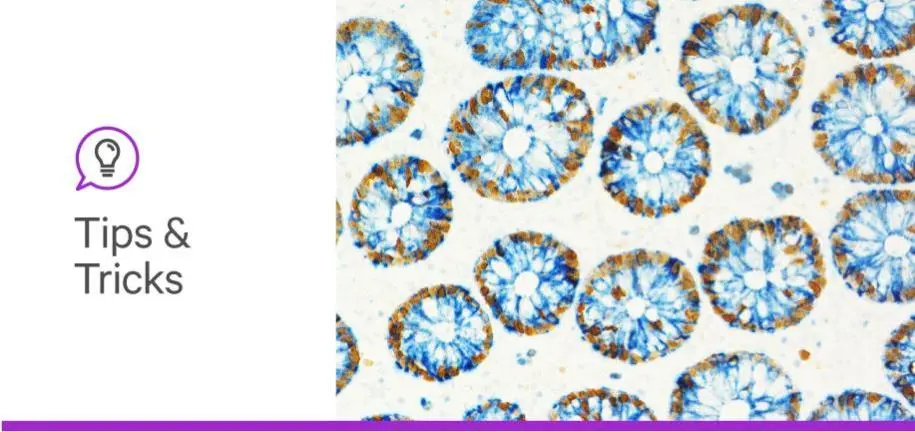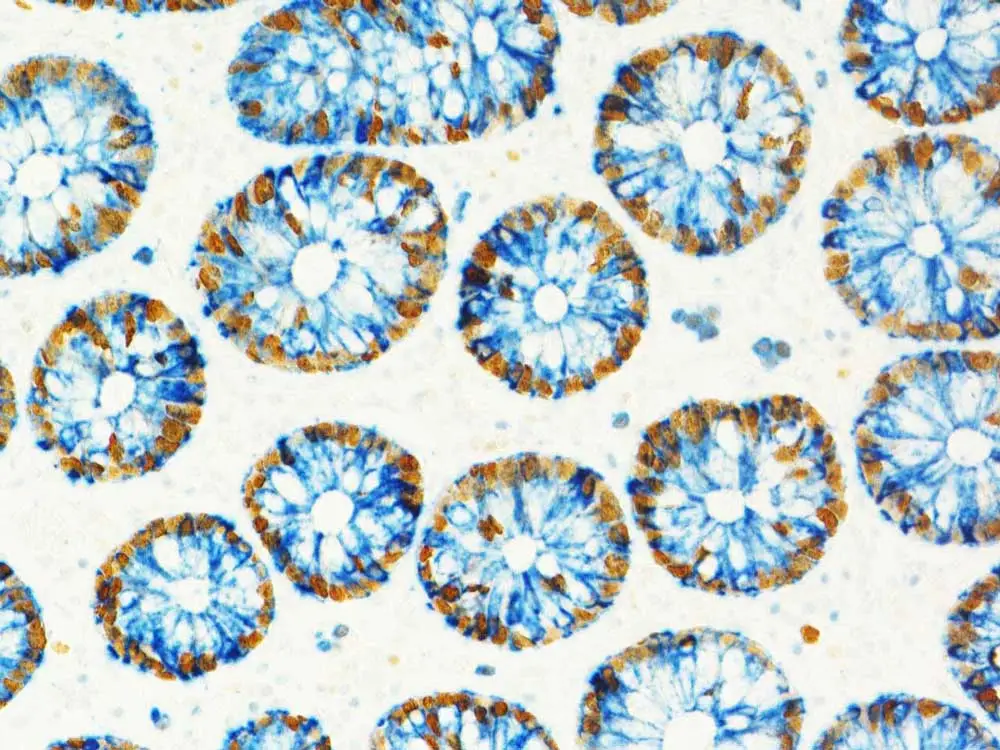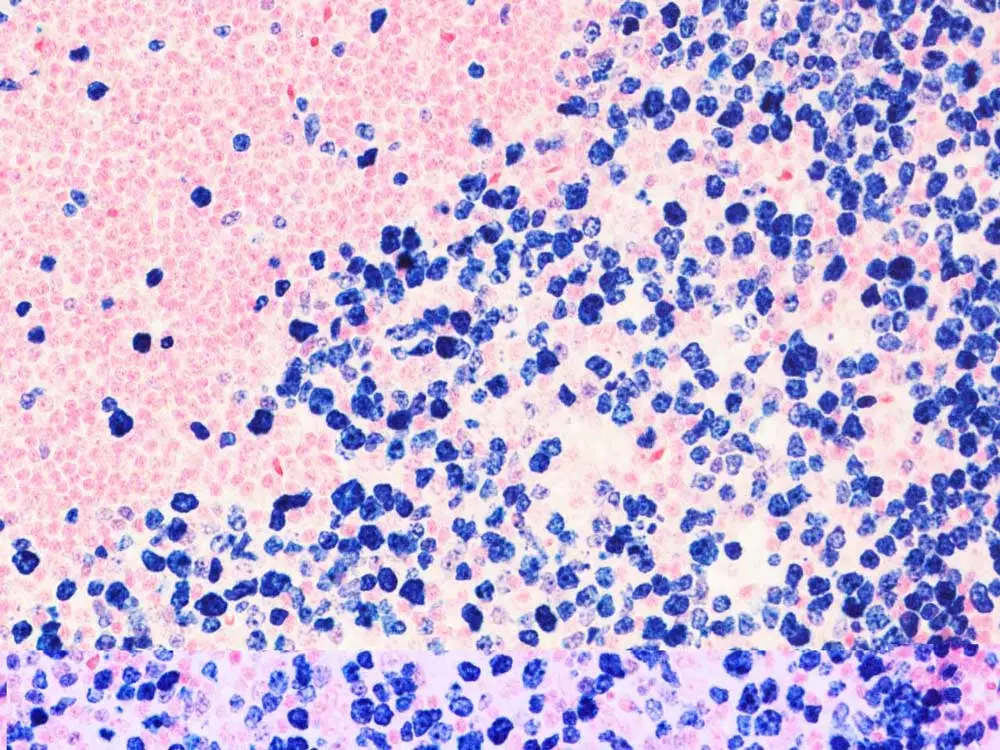
Vector Laboratories is closed for the President’s Day on Monday, February 19th. We will be back in the office on Tuesday, February 20th.
We will respond to emails upon our return. Have a wonderful day.
Menu
Vector Laboratories is closed for the President’s Day on Monday, February 19th. We will be back in the office on Tuesday, February 20th.
We will respond to emails upon our return. Have a wonderful day.

Picture this: a chemist walks into a lab and asks his colleagues how to transition some immunohistochemistry (IHC)-stained slides in a buffer solution to coverslip with a non-aqueous mounting media. From his perspective, it’s a simple problem, and it should have a similarly simple solution. His colleague’s response, however? The process requires a complicated series of dehydration and xylene steps, which will take over half an hour. As you might imagine, this answer set off a strong response with Timothy Karpishin, PhD, Director of Chemistry at Vector Laboratories.
Thus, the chemist, now faced with a challenge, set out to change the way researchers have been handling IHC slides for generations.
The problem for researchers working with IHC-stained slides is that you typically mount, or apply the coverslip, with a non-aqueous, very hydrophobic mounting medium. “This generally means you have to take your tissues, which are in a water-based solution, and change their environment by bringing them through a dehydration series to slowly remove the water,” explains Tim. “And then the mounting medium at the end of the process isn’t compatible with the alcohol you’re using — you still have to remove the alcohol and replace it with a hydrophobic liquid, such as xylene. This hydrophobic liquid is then compatible with your mounting media. So, faced with this tedious workflow, I suggested that we explore developing a mounting medium that compresses the workflow dramatically.” And several rounds of formulation testing later, VectaMount® Express Mounting Medium was born.


Compared to the traditional workflow, researchers can skip the long dehydration and clearing steps, which can take anywhere from 15 to 30 minutes. With VectaMount Express, following staining and a water rinse to remove the salts from your buffer solution, you rapidly dehydrate your slides in isopropanol. “We prefer isopropanol because it dries a little bit slower,” explains Tim, “so when you finally lift your slides out of the isopropanol, it doesn’t dry as quickly as ethanol. This gives you more time and flexibility for applying your coverslip.”
The clearing step that normally requires a xylene wash actually occurs when you apply VectaMount Express to your tissue specimen. “Clearing generally refers to matching the refractive index, or RI, of your tissue specimen with the mounting medium and glass slide,” explains Tim. Your glass slide and coverslip have an RI of about 1.5, and your tissue has an RI of about 1.46–1.48. To get clear, bright images, you need your mounting medium to have a similar RI. However, since alcohols, such as ethanol and isopropanol, have an RI of about 1.37, you can still see your tissue section on the slide after washing. That’s when xylene comes in. It matches your tissue with an RI of 1.49, making your tissue sections appear perfectly clear. VectaMount Express, on the other hand, was engineered with an RI of 1.49, but it is also compatible with alcohol. “That’s the difference,” says Tim. “You can clear your tissue without the need to swap out the alcohol. And when it dries, you’re left with a mounting medium that matches the RI of your tissue, maximizing the clarity, resolution, and brightness of the images.”
We asked Tim if he has any tips for researchers considering VectaMount Express; his advice, just give it a go—follow the instructions in the protocol and see what you can do with the saved time. “It simplifies the traditional workflow. There’s really nothing too complicated—no extra equipment is needed. It’s just a matter of the isopropanol washes and then the direct mounting,” says Tim. So far, the team has looked at a variety of substrates and counterstained slides 18 months after mounting with VectaMount Express, and the color and sensitivity remain stable.
Explore how you can streamline your IHC workflow with faster clearing and mounting. Get started today.





Stay in the Loop. Join Our Online Community
Together we breakthroughTM

©Vector Laboratories, Inc. 2024 All Rights Reserved.